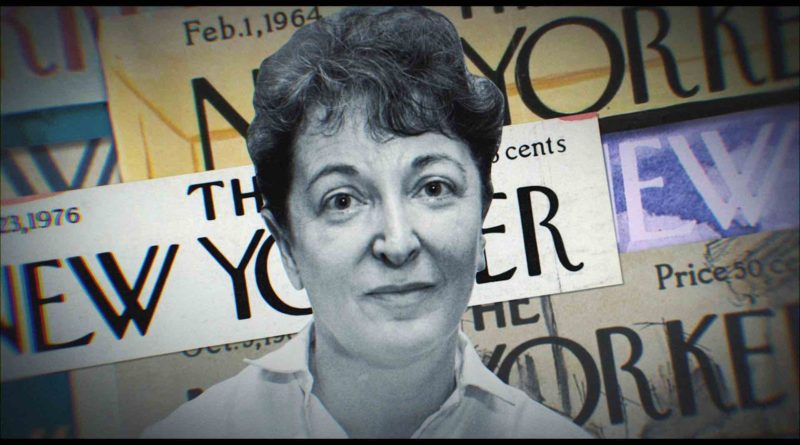REVIEW: ‘What She Said: The Art of Pauline Kael’
Photo: Pauline Kael is the subject of a new documentary by director Rob Garver. Photo courtesy of Juno Films / Provided with permission.
It’s a tall order to write a movie review about a documentary profiling one of the most famous movie reviewers of all time. What She Said: The Art of Pauline Kael takes a 98-minute look into the life and criticism of the longtime writer for The New Yorker who stood out amongst her contemporaries for her unabashed honesty and sharp wit.
The documentary, directed and edited by Rob Garver, features several talking heads, including Kael’s daughter, many directors who admired her words and fellow critics who learned from her prose. They collectively remember the impact and influence of Kael’s thoughtful documenting of cinema over the course of several key decades in the 20th century. The film is engrossing because it gives ample spotlight to the critic’s actual criticisms, letting some of her best one-liners and analytical insights take over the screen thanks to a solid voiceover from Sarah Jessica Parker.
The narrative is mostly chronological, with Garver beginning at the beginning and ending at the ending, but the doc gains full steam in the 1970s when American cinema was coming into its own, and Kael had a lot to write about — both positive and negative. For example, she was an early champion of Last Tango in Paris, the Bernardo Bertolucci film that divided and shocked audiences, and she found Shoah, a gargantuan-length film about the Holocaust, lacking. Both of these opinions proved unpopular, but Kael never backed down from her praises or digs.
As a movie reviewer, she gravitated to auteurs who were trying something new, seemingly free from the economic structure of the all-encompassing Hollywood business model. She enjoyed early Woody Allen, Robert Altman and Martin Scorsese. In particular, she found a singular voice in Scorsese’s Mean Streets, which no doubt added to the director’s rising star power and ability to make more and even better films.
For every movie she loved, she probably had two or three she didn’t, and sometimes her articles in The New Yorker were more discussed than the films in question, resulting in plenty of hate mail and even the occasional death threat. She didn’t stop — thankfully. She was a trailblazer in an industry dominated by a gentleman’s club that believed the intellectualism of film criticism was reserved for one gender.
Her actual writing was unique amongst her contemporaries. For starters, she recorded audience reactions when she watched a film in the movie theater (a rare experience for movie critics who often receive screeners at home or are invited to private viewings). She liked to sense the anticipation, boredom and cheer of a crowd, and often those communal reactions made the print of her final draft.
Kael’s professional life, which extended decades and included 13 books, a sojourn as a movie consultant in Hollywood and a freelance career, stretched a time period in the United States that was fraught with male domination and lost opportunities for women in society and the workplace. Some of this history is mentioned in the documentary, but more could have been explored. It would have been nice to place some of her writings into a larger social context. With out it, there are stretches of the film that come off as inevitable: Kael publishes something negative, a Hollywood director or author disregards the critical contribution; Kael publishes something positive, a Hollywood director or author praises her work.
What Garver does so well is present a holistic view of Kael and her writing, and those word are truly the selling point here. To help understand the words, the director has amassed an impressive list of talking heads. From Quentin Tarantino to Greil Marcus to Paul Schrader, the so-called experts are fascinating in how they deconstruct a Kael review and what it meant to them as filmmakers and lovers of movies.
What She Said: The Art of Pauline Kael is ultimately a time-capsule documentary. Besides the many film clips that the doc is able to creatively utilize (kudos to the team for securing the rights to so many movies), there’s also a sense that Kael’s story is from a bygone era. Film criticism is not what it used to be, with many more voices entering the fray, meaning the democratization of voices but also a difficulty in distinguishing between consumer feedback and intellectual commentary. Of course, Kael was not in either camp. She simply saw movies and let people know what she thought — a revolutionary idea indeed.
By John Soltes / Publisher / John@HollywoodSoapbox.com
What She Said: The Art of Pauline Kael, directed and edited by Rob Garver, is currently playing New York City’s Film Forum. Click here for more information and tickets. Rating: 




